|
Point Reyes National Seashore, authorized in 1962, encompasses ~71,000 acres, including ~32,000 acres of Wilderness. It has over 3,000 years of cultural history and provides a critical habitat to marine and land-based wildlife. Our goal with Point Reyes Record: Then & Now is to tell the park's story by matching beautiful and fascinating archival photographs with photos from today. Join us as we reveal the hidden history of familiar locations. The galleries of this collection showcase a variety of locations in Point Reyes and the diverse people that occupied them. Check back periodically as we are building this collection over time. 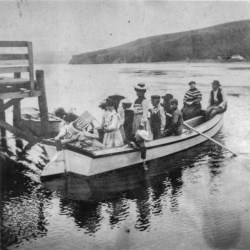
Point Reyes RanchesShortly after the Gold Rush, significant portions of the Point Reyes Peninsula were turned into dairy ranches, which exported the Point Reyes brand of butter and cheese to San Francisco. Tenant ranches were rented by Irish, Swedish, Swiss, and Azorian families. Coast Miwok families found work on the ranches, as did Chinese, Canadian, Filipino, Mexican, and German immigrants. By 1867, Marin County produced the largest yield of butter in California. 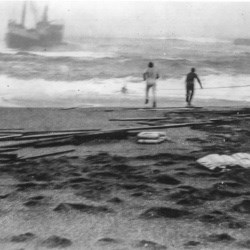
United States Life-Saving ServiceFrom 1890 to 1968, the U.S. Life-Saving Service watched Point Reyes' eighty miles of undeveloped coastline and sent its surfmen out into the rough coastal waters on numerous rescues. Initially situated along the turbulent Ten-Mile Beach (aka, Point Reyes Beach or Great Beach), the Coast Guard relocated the station to the protected waters of Drakes Bay near Chimney Rock in 1927. 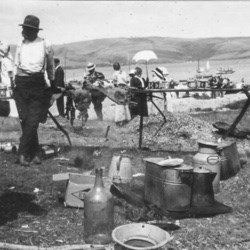
Tomales Bay CommunitiesDairy ranches, oyster farms, small towns, state parks, and the National Seashore surround Tomales Bay, a fifteen mile long estuary. The area has a history of enterprise, development, and conservation. Lumber, dairy, and fishing industries, vacation homes, and ghosts of a faded railroad all left their mark, visible on the landscape and the environment. Yet, it is a resilient region. Natural ecosystems are being restored with help from a variety of agencies and non-profits, and tourism and outdoor recreation is on the rise. 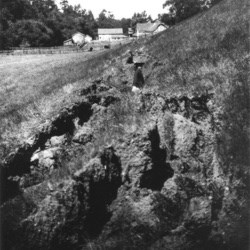
San Andreas Fault and Habitat DiversityThe San Andreas Fault parallels the eastern border of the park and separates the North American and Pacific Tectonic Plates. Due to the variety of habitat and uniqueness of the geology, 490 species of birds have been spotted here, eighty species of mammals, eighty-five species of fish, twenty-nine species of reptiles and amphibians, and thousands of aquatic and terrestrial invertebrate species. 
Point Reyes LighthouseThe Point Reyes Lighthouse became operational on December 1, 1870. The discovery of gold in California dramatically increased traffic to and from San Francisco Bay. After multiple shipwrecks and an estimated million dollars of shipping losses, the United States Congress decided it was time to build a lighthouse. 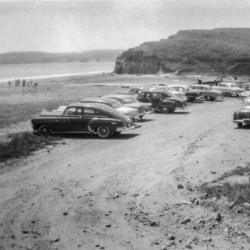
Elsewhere on the PointPoint Reyes National Seashore has a long and varied history. This section includes a few historic locales worthy of note. |
Last updated: February 9, 2024
Success
Thank you. Your feedback has been received.
Error
alert message

